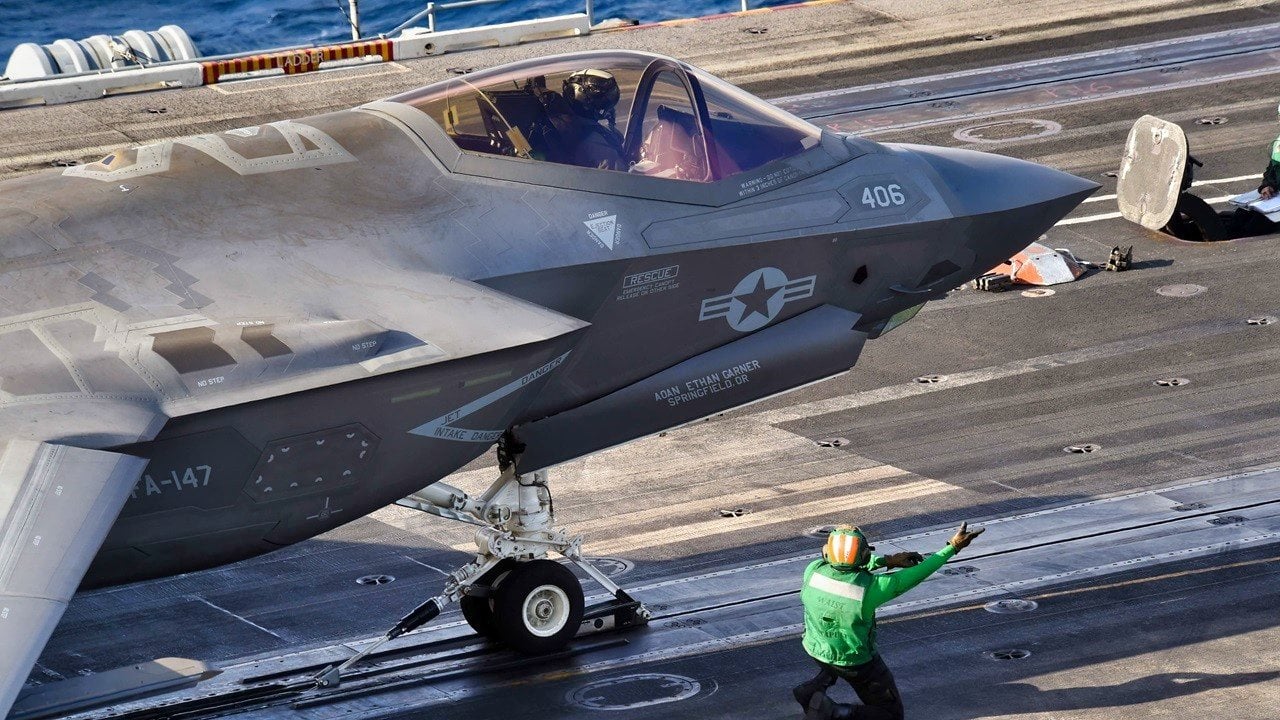Putin Will Freak: New F-35 Fighters Are Headed to Closer to Russia's Doorstep
Romania is nearing a $6.5 billion agreement with the U.S. to acquire thirty-two F-35 Lightning II aircraft, including logistics, training services, and ordnance. The first delivery is expected by 2030.
Summary and Key Points: Romania is nearing a $6.5 billion agreement with the U.S. to acquire thirty-two F-35 Lightning II aircraft, including logistics, training services, and ordnance. The first delivery is expected by 2030.

-Meanwhile, Romania has procured thirty-two second-hand F-16s from Norway to join its existing fleet. Greece is also close to purchasing up to twenty F-35s, with deliveries starting in 2028 for training purposes.
-Both countries' moves to bolster their air forces reflect NATO's strategic focus on its eastern flank, with several NATO members already operating or planning to adopt the F-35 for regional security.
More F-35s Headed to the Balkans
NATO member Romania is reported to be close to signing a government-to-government agreement with the United States for the purchase of nearly three dozen Lockheed Martin F-35 Lightning II aircraft. The deal, which has been on the table since last September, could be closed this fall.
Bucharest has expressed interest in acquiring thirty-two F-35s in a deal worth $6.5 billion, which also includes logistics and training services, as well as flight simulators and ordnance for the aircraft, Reuters reported on Tuesday. Romania could receive the first aircraft in 2030.
As the Romanian Air Force won’t be operating the F-35s until the early 2030s (or perhaps later based on Lockheed Martin’s production schedule), Bucharest has purchased thirty-two second-hand F-16 Fighting Falcons from NATO ally Norway, which will join seventeen it previously acquired from Portugal in 2016.
NATO’s Eastern Flank in the Balkans
Romania, which shares a 650-km (400-mile) border with Ukraine, has been a NATO member since 2004 and has a long and complicated history with Russia. It has claimed Russian drones have strayed into its territory on multiple occasions.
Bucharest has been a staunch supporter of Ukraine since Russia launched its unprovoked invasion two and a half years ago, and last month indicated that it would donate a U.S.-made MIM-104 Patriot air defense system to Kyiv. It is one of five such anti-aircraft platforms that have been pledged by NATO members.
Greece Is Also Eyeing the F-35
Athens is also close to sealing a deal for the purchase of up to twenty F-35s after the Greek parliament approved it last month. On Tuesday, the National Security Council offered its approval and authorized the Greek Ministry of Defense’s General Directorate for Equipment and Investment to move forward with discussions with Washington.

Greece is looking to finalize the purchase before the upcoming U.S. presidential election. Should the deal be completed, the first F-35s could be delivered to the Hellenic Air Force in 2028. However, those aircraft would likely remain in the United States for training—a standard procedure for the fifth-generation stealth fighter.
Eventually, the F-35s would be deployed to Andravida Air Base in the northwest of the Peloponnese Peninsula in the early 2030s—but it would require approval from the United States to ensure the security of the facility.
The $3.47-billion deal would also include initial technical support, pilot and engineer training on the Lightning II, and simulators for ongoing training. Greece has already been one of the NATO members that typically spent more than 2 percent of its gross domestic product (GDP) on its national defense, as it increased its military acquisitions in recent years due to its tensions with Turkey.
However, this year Athens looked to reset relations with Ankara.
Even as Romania and Greece are increasingly likely to move forward in acquiring the F-35, the aircraft is already operated by numerous NATO partners including Denmark, Italy, the Netherlands, Norway, and the United Kingdom. In addition, Belgium, the Czech Republic, Finland, Germany, and Poland are also set to adopt the stealth fighter in the coming years to help maintain regional security and stability.

Lockheed Martin expects the NATO members and other partners in Europe to have about 500 F-35s by the decade’s end.
About the Author
Peter Suciu is a Michigan-based writer. He has contributed to more than four dozen magazines, newspapers, and websites with over 3,200 published pieces over a twenty-year career in journalism. He regularly writes about military hardware, firearms history, cybersecurity, politics, and international affairs. Peter is also a Contributing Writer for Forbes and Clearance Jobs. You can follow him on Twitter: @PeterSuciu. You can email the author: [email protected].
All images are Creative Commons and/or Shutterstock.


